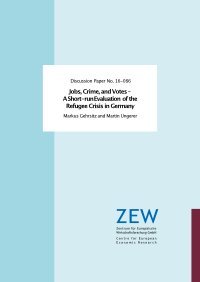By Eva-Maria Egger
Research suggests that the social effects of internal migration may be substantially different from those associated with international immigration. In this paper, I provide the first evidence of the effect of internal migration on crime with panel data from Brazilian microregiões (microregions). Using local labor demand shocks as an instrumental variable, I find that a 10% increase in the in-migration rate translates to a 9.4% increase in the homicide rate in destination areas. I propose that the effect is driven by intermediating labor market effects and not by the migrants themselves. Exploring these possible channels, I do not find that crime-prone migrants drive the results. The effect is only significant in locations with high past crime rates, indicating crime inertia, and in places with a small informal sector, suggesting that the impact of internal migration is conditioned by the ability of local labor markets to accommodate migrants. This finding is supported by a negative effect of in-migration on formal employment in rigid markets and a positive effect on unemployment among young men, with the latter explaining most of the total effect.
Economic Development and Cultural Change, Volume 71, Number 1, October 2022, 37p.







